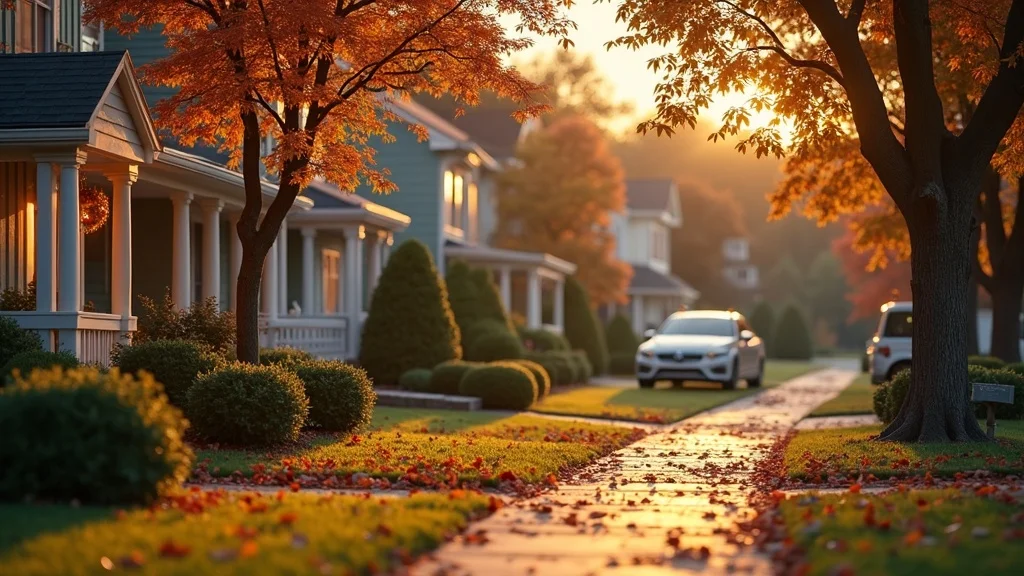Have you ever wondered what it would feel like to wake up with the birds, tend your own garden for breakfast, and power your home using only the sun? Off-grid living invites us to challenge the ordinary and discover a life of independence, sustainability, and deep connection with nature. In this guide, you'll uncover the top five benefits of leaving the mainstream grid behind, practical tips for starting your journey, and expert advice for thriving outside the lines of conventional living.
Unlocking the Possibilities: What Does Off-Grid Living Really Mean?
At its core, living off the grid means separating your daily life from public utilities, including the electrical grid, natural gas, municipal water supplies, and public waste management systems. While we traditionally rely heavily on public utilities and infrastructure, choosing to live off the grid is a lifestyle shift that prioritizes independence, self-reliance, and freedom.
People who live off the grid generate their own electrical power, collect or treat their own water, manage their waste, and often grow their own food, creating a lifestyle that's not just sustainable, but restorative. This isn't about living in the middle of nowhere; it's about taking control and forging a direct relationship with what powers, nourishes, and sustains you day to day.
Living on the grid relies on centralized power plants, sewer systems, and water treatment managed by city or county authorities. Bills and regulations are part of daily life, and disruptions to the power grid and rising prices are outside your control.
Off-grid living allows for complete autonomy through the use of solar panels, wind turbines, rainwater collection, composting toilets, and personal gardening, fostering a self-reliant existence. This approach offers resilience, freedom, and connection to the rhythms of nature.

What You'll Learn About Off-Grid Living
The benefits of connecting with nature through off-grid living
Practical tips for a sustainable and healthy lifestyle while living off the grid
How to achieve energy independence and reduce reliance on mainstream electrical power
Top 5 Benefits of Off-Grid Living
1. Connection to Nature
2. Sustainability
3. Improved Health
4. Healthier Diet
5. Energy Independence
1. Off-Grid Living Benefits: Connect with Nature
One of the most rewarding aspects of off-grid living is the daily opportunity to immerse yourself in nature. Clinical research indicates that increased exposure to trees, open skies, and natural sounds can significantly enhance mental health and well-being. For instance, UCLA Health highlights that spending time in nature can boost mood, lower blood pressure, reduce anxiety, and even strengthen the immune system.
In contrast to the distractions of city life, such as traffic noise, excessive screen time, and artificial lighting, spending consistent time outdoors can reduce anxiety, sharpen focus, and foster creativity. Engaging in activities like gardening, hiking, or foraging transforms daily tasks into meaningful experiences that replace stress with purpose.
Habits that Improve Health and Wellness
Developing outdoor habits in an off-grid lifestyle promotes overall wellness and nurtures a deep appreciation for nature. This approach fosters a sense of belonging and stewardship reminiscent of earlier times. Research from MHF shows a strong link between time spent in nature and lower levels of depression and anxiety symptoms.
Rather than treating nature as an escape, off-grid living integrates it into your daily routine. Tasks like harvesting food, collecting water, or walking your property become part of everyday life, rather than occasional activities. Off-grid living offers daily opportunities for interaction with flora, fauna, fresh water, and clean air, beyond just weekend hikes or park visits.
Research from various institutions, including UCLA Health and the Chico State Ecotherapy Program, confirms that this type of engagement enhances cognitive function, reduces anxiety, and promotes overall health. Studies suggest that this can lead to lower cortisol levels, improved immune function, and better mood and focus.
When you step off the grid, you don't just reduce your utility bills; you also regain something modern life has taken away: a restorative connection to your environment that benefits your health and well-being.

2. Off-Grid Lifestyle Benefits: Increase Your Sustainability
How Living Off the Grid Is a Masterclass in Sustainability
Living off the grid means moving away from wasteful, convenience-based habits and embracing zero-waste routines, composting toilets, rainwater harvesting, and renewable energy systems. When living off-grid, reusing glass jars, starting your own composting system, and harvesting rainwater through collection barrels become natural practices. Adopt a zero-waste lifestyle by using reusable containers, reducing packaging, and composting kitchen waste.
Responsible Consumption and Eco-Friendly Habits
Off-grid living fosters a quality-over-quantity mindset, where every purchase and practice is deliberate. Instead of giving in to tempting impulse buys when shopping, which can lead to an accumulation of unnecessary purchases, you'll prioritize durability and multi-use tools. Responsible consumption encompasses every aspect of an off-grid lifestyle, from food choices to energy usage. This approach promotes a simple, fulfilling life.
By using fewer resources and embracing repurposing and upcycling, off-grid families quickly discover that reducing reliance on mass-produced items not only saves money and reduces clutter but also increases creativity and self-sufficiency. Sustainability Reject disposable fast culture; instead, repair, reuse, recycle, and build and buy for longevity.
3. Benefits Of Off-Grid Living: Health and Wellness Improvement
Sustainable Lifestyle and Health Advantages
Health is central to living off the grid, where access to clean air and an active lifestyle contribute to overall wellness. Living amidst fresh air in green spaces directly benefits your lungs, heart, and mental clarity. Without the smog and pollutants of urban life, your risk of respiratory issues declines. At the same time, daily chores such as carrying water, splitting wood, and harvesting fruit trees provide gentle, sustained physical activity.
Off-grid living emphasizes wholesome, whole, and unprocessed foods, as well as active daily routines, which are essential for cardiovascular health and overall longevity. Moreover, avoiding chemical pesticides, cleaning products, and other harmful chemicals reduces your exposure to them. Creating a homelife minus chemical toxins is possible when you adopt an off-grid lifestyle. As a result, physical, emotional, and spiritual health become intertwined, fostering resilience and vitality that extend far beyond mere feelings of well-being.
4. Healthy Eating Benefits of Living Off the Grid
Off-grid living often means growing your own food or sourcing it from local, organic growers. This lifestyle not only cultivates fruits and vegetables but also reduces your carbon footprint by replacing industrially produced groceries with backyard harvests. Eating seasonally and cultivating diverse crops supports sustainability, while simultaneously nourishing family health.
Living off-grid naturally supports sustainability goals like reducing water waste and lowering greenhouse gas emissions, according to the Environmental Protection Agency (EPA)
Clean air, untainted by car exhaust and factory fumes, helps reduce the risks of respiratory illness, allergies, and asthma. Physical activity is mandatory, from tending gardens to walking along nature trails; it multiplies the health benefits of this lifestyle. In short, healthier eating, cleaner air, and regular exercise naturally coalesce into the off-grid lifestyle, making going off-grid a foundation for both wellness and happiness.
Eat what you grow or gather, organic, whole foods free of preservatives and toxins.
Physical effort and an abundance of nature work together for long-term good health.
Reduced pollution, thanks to a lower reliance on the traditional power grid and fossil fuels, results in cleaner air and water for your family.

5. Off-Grid Living Benefits: Energy Independence
Gain Energy Independence Through Off-Grid Living
Perhaps the most significant benefit of off-grid living is complete energy independence, achieved by generating your own electricity. By generating power with solar panels, wind turbines, or small hydro systems, off-grid homes remove the uncertainty of fluctuating power grid prices and supply. No longer subject to fossil fuel dependency, rolling blackouts, or energy corporation policies, you set your path to self-sufficiency with renewable energy sources. This not only increases your resilience against emergencies but also reduces your carbon footprint. Energy independence means you control your energy expenses, energy system, and long-term environmental impact. You can score a win for your wallet and for a more sustainable lifestyle.
Solar power for homes to create a reliable, renewable energy stream tailored to your needs.
No more fossil fuels or public utilities, lowering both pollution and monthly bills.
Off-Grid Energy Solutions: Solar vs. Wind Energy

Choosing your energy setup is a pivotal step when you decide to live off the grid. Solar panels are popular for their simplicity, especially in locations with abundant sunlight, while wind turbines excel in areas with steady breezes. Both options reward users with free, renewable power year after year. When planning an off-grid energy system, consider your location, average sunlight or wind strength, and budget.
Many off-grid homes use a hybrid energy system that combines solar panels for daytime power and wind turbines for nighttime or stormy conditions. This approach provides greater reliability across varying climates. To store energy when neither source is producing, homes often install battery systems, with lithium-iron-phosphate (LiFePO₄) batteries being a popular choice due to their long lifespan and thermal stability. Additionally, many systems utilize direct current (DC) power to minimize energy loss during conversion, particularly in simpler, smaller-scale setups.
According to the U.S. Department of Energy, off-grid or “stand-alone” renewable systems typically include batteries and other equipment to store and manage electricity for times when the generation source is unavailable.
DOE: Grid or Stand-Alone Renewable Energy Systems
Solar is best in sunny regions.
Wind power is most optimal where wind speeds are reliable.
Setting up off-grid energy solutions means calculating your household's energy needs and sizing panels, turbines, and batteries accordingly.
Maintenance is easier than you might expect, and modern monitoring systems make it a breeze.
Bonus: Waste Management in Off-Grid Living
Effective Waste Management Strategies
Effective waste management is vital for anyone committed to living off the grid, as it ensures sustainability and environmental responsibility. Without city sewer systems or municipal trash pickup, you must handle trash and organic waste responsibly. Composting toilets and worm bins are standard in off-grid homes, ensuring nutrients are returned to the earth rather than sent to landfills.
Collecting food scraps for compost helps restore soil fertility and takes your off-grid life to the next level in terms of sustainability. With thoughtful planning, you can manage waste so efficiently that you contribute zero garbage to landfills.
Start with kitchen composting—use bins for collecting food scraps and turn them into nutrient-rich soil for your garden.
Choose reusable, biodegradable products whenever possible to reduce landfill waste.

Practical Guide: Steps to Successfully Live Off the Grid
Assess your needs and location for off-grid living: Understand your climate, water access, and local building codes before you start.
Plan for water, waste management, and electrical power: Determine how you'll collect and treat water, manage waste, and establish independent energy sources, such as solar panels or wind turbines.
Set up your grid life infrastructure: shelter, food supply, and energy. Build or retrofit a safe, efficient home, establish gardens, and install reliable energy systems for everyday comfort.
-
Adopt eco-friendly habits and a zero-waste lifestyle: start composting, minimize waste, and opt for reusable products to foster sustainability from the start.
Table: Comparing City Living vs. Off-Grid Living
Key Factor |
City Living |
Off-Grid Living |
|---|---|---|
Cost |
|
|
Environmental Impact |
|
|
Health and Wellness |
|
|
Energy |
|
|
Waste Management |
|
|
People Also Ask: Common Questions About Off-Grid Living
Is living off-grid illegal?
It's not usually illegal everywhere, but careful research and communication with local regulators are essential before you commit to living off the grid full-time.
How much money do I need to live off the grid?
The costs of off-grid living can vary significantly. The high initial investment includes land (often rural and more affordable than city lots), construction, solar panels, wind turbines, and water collection systems. The setup ranges from a relatively low-cost, tiny home to a more costly, family-sized house with robust infrastructure. Ongoing costs are low, mainly for maintenance, gardening, and occasional equipment upgrades, as you won't have typical monthly utility bills.

What state is easiest for off-grid living?
States like Arkansas, Texas, and California are among the states that welcome off-grid living, thanks to affordable land, access to renewable water sources, and community support for sustainable lifestyles. Before you start your off-grid life, research the policies of the state, county, city, and HOA (in some cases) associated with your property.
What does living off the grid mean?
Living off the grid means building a life that is independent of public utilities, such as electricity, water treatment, and waste management. It involves using renewable energy, sustainable food practices, and direct resource management, distinguishing it from standard on-grid or city living that relies on centralized infrastructure and services.
Must-Have Tools and Resources for Off-Grid Living
Solar panels and batteries (lithium iron phosphate recommended)
Water filters and rainwater collection barrels
Gardening and composting tools
Power generation solutions, portable generators, wind turbines
Basic hand and construction tools for DIY repairs
Reusable containers and zero-waste storage supplies
Books and online resources on permaculture, off-grid living, and renewable energy systems

FAQs About Off-Grid Living
Is it possible to partially commit to off-grid living?
Absolutely. Many people start by supplementing their grid life with solar panels, rainwater collection, or organic gardening, gradually reducing dependence on public utilities. Partial commitment is ideal for those seeking to minimize risk before making a full transition.
How do I handle education and healthcare when living off the grid?
Families often homeschool or use remote learning, and some off-grid communities offer group classes. To access healthcare, most rely on a mix of self-care, telemedicine, and occasional trips to nearby hospitals or clinics. Planning and maintaining comprehensive emergency first aid supplies is crucial for remote living.
Are there communities that support off-grid living newbies?
Yes, from eco-villages to online forums, there are active communities ready to help newcomers get started, offering advice, workshops, and sometimes even hands-on tours of successful off-grid homes to make the transition smoother.
What are the biggest challenges of living off the grid?
Challenges include adapting to new routines and learning to repair and maintain your systems. Rewards in self-sufficiency, health, and sustainability offset the initial learning curve.
Key Takeaways on Off-Grid Living
Connection with nature greatly enhances well-being
Health improvements through daily activity are significant
True energy independence reduces reliance on fossil fuels
You can adapt off-grid living to meet your needs and goals
Is Off-Grid Living Right for You?
Only you can answer that question. However, the benefits are immense from experiencing a connection to nature, including improved sustainability, better health, a healthier diet, and energy independence. This demonstrates that off-grid living offers a life of purpose, wellness, and resilience.

If you seek a deeper connection to nature and a chance to live according to your own rules, going off-grid could be your next great adventure.
Ready to Discover More About Off-Grid Living? Start your sustainable journey today.
Whether you're seeking land for recreation, hunting, camping, off-grid living, or an investment opportunity, you can do it online. Start viewing land for off-grid living today at Government Auction. This trusted auction platform makes owning land easy and affordable for everyone. What is great about Government Auction is that they offer owner financing, no credit checks, and low down payments. Explore the diverse selection of properties up for auction and secure your future. Bid on your dream property today. Your ideal property is just a click away at Government Auction.
References and Additional Reading
Exploring the benefits of off-grid living can provide valuable insights into achieving energy independence and a sustainable lifestyle. The article "10 Impressive Benefits of Living Off the Grid" offers a comprehensive overview of how disconnecting from public utilities can reduce reliance on fossil fuels and lower greenhouse gas emissions. (ecoredux.com)
Additionally, "Off-Grid Living: Pros and Cons for a Sustainable Life" explores the benefits of energy independence and a minimalist lifestyle, highlighting the financial and environmental advantages of generating your own power and reducing reliance on traditional energy sources. (mangovans.com) If you're serious about embracing off-grid living, these resources will provide you with a deeper understanding of its benefits and practical considerations.
UCLA Health. (2025, May 14). 7 Health Benefits of Spending Time in Nature
California State University, Chico. Ecotherapy Program
MHF. Nature and Mental Health and Nature: How connecting with nature benefits our mental health
U.S. Department of Energy. Energy Saver
United States Environmental Protection Agency. Sustainability
 Add Row
Add Row  Add
Add 



Write A Comment